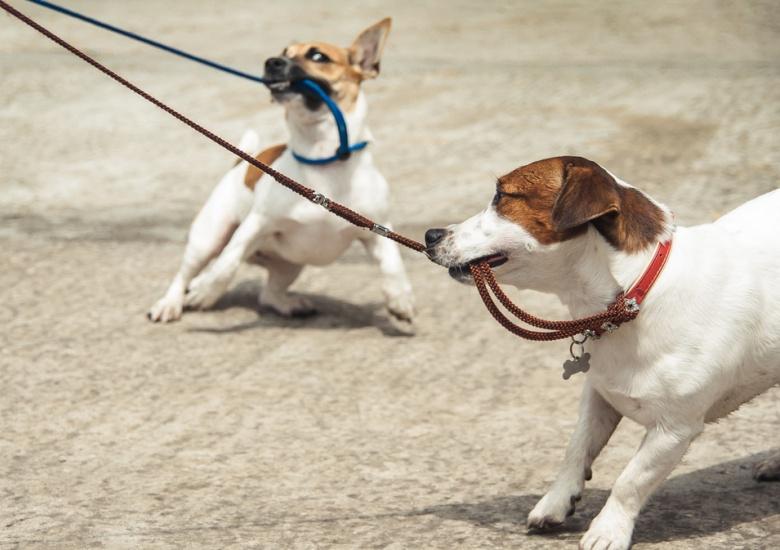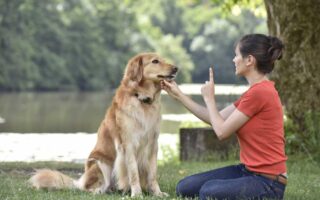Mastering the Art of Dog Leash Training: A Guide to Bonding and Control
Picture this: a sun-drenched morning, the chirping of birds, and the thrill of adventure beckoning you and your furry companion to step outside. But there’s one little hurdle standing in your way—a wriggly, excited pup who seems to have a mind of their own when it comes to leash manners. Dog leash training is not just a necessity; it’s a journey that transforms every walk into an opportunity for connection, exploration, and joy. In this article, we will delve into the essentials of leash training, offering insights and techniques designed to foster a harmonious relationship between you and your dog. Whether you’re starting with a feisty puppy or working with an older dog set in their ways, understanding the principles of leash training can turn a chaotic stroll into a wonderful bonding experience. Join us as we uncover the art of leash training and set the stage for countless adventures ahead.
Table of Contents
- Understanding the Importance of Proper Leash Training for Your Dog
- Essential Techniques for Effective Leash Training
- Common Challenges in Leash Training and How to Overcome Them
- Choosing the Right Equipment to Facilitate Successful Leash Training
- Q&A
- To Wrap It Up
Understanding the Importance of Proper Leash Training for Your Dog
Leash training is a vital aspect of responsible dog ownership that enhances the bond between pet and owner. Proper training not only ensures a safe environment during walks but also helps in managing your dog’s behavior. A well-trained dog on a leash is less likely to pull, lunge, or become distracted, making outings more enjoyable for both the dog and the handler. Strong leash training creates mutual respect and understanding, leading to a more harmonious relationship. Consider these key benefits of effective leash training:
- Safety: Reduces the risk of accidents or escapes.
- Socialization: Encourages positive interactions with other dogs and people.
- Control: Enables better management of your dog in various environments.
- Exercise: Facilitates more structured walks for physical activity.
Moreover, different techniques can be employed during leash training to achieve the best results. Consistent practice, patience, and positive reinforcement are essential components. Below is a simple overview of effective leash training techniques:
| Technique | Description |
|---|---|
| Loose Leash Walking | Teach your dog to walk beside you without tension on the leash. |
| Stop & Go | Stop walking when your dog pulls, and resume only when they return to your side. |
| Reward-Based Training | Use treats and praise to reinforce good behavior during walks. |
Essential Techniques for Effective Leash Training
Leash training your dog is an essential skill that emphasizes communication and companionship between you and your furry friend. Consistency is key; consider establishing a designated training area, free from distractions, to help your dog focus. Begin with the basics: reward your pet for walking beside you rather than pulling ahead. This can be achieved by using positive reinforcement techniques, such as treats and praise, every time they maintain a proper heel position. Patience is equally important—some dogs may take longer than others to adjust to leash walking. Using a short, sturdy leash can help maintain control while allowing your dog the freedom to explore within limits.
Another vital aspect of leash training is understanding body language. Pay attention to your dog’s behavior; if they tug or pull, gently redirect them back to your side without harsh corrections. Introduce a simple command like “let’s go” to signal when to move forward. Incorporate short, frequent sessions to keep training engaging and avoid overwhelming your pet. Also, consider varied environments to practice; this can enhance their exposure and adaptability. Below is a helpful comparison of various leash types, considering factors like material, length, and control:
| Leash Type | Material | Length | Best For |
|---|---|---|---|
| Standard Leash | Nylon/Leather | 4-6 feet | Everyday use |
| Retractable Leash | Variable | Training in open spaces | |
| Martingale Leash | Nylon | 4-6 feet | Pullers |
Common Challenges in Leash Training and How to Overcome Them
Leash training can present numerous challenges that can frustrate both dog owners and their furry friends. One common issue is pulling. Many dogs instinctively pull on the leash due to excitement or a strong desire to explore their surroundings. To combat this, owners can employ techniques such as the “stop and go” method, where you halt movement whenever your dog pulls. This teaches the pet that pulling doesn’t result in forward motion. Another challenge is distraction from external stimuli. Dogs may become overly fixated on other people, animals, or sounds, leading to disobedience. To overcome this, practice desensitization by gradually exposing your dog to distractions while rewarding them for remaining focused on you.
Furthermore, inconsistency in training efforts can hinder progress. If family members employ different commands or methods, dogs can become confused. It’s essential that everyone involved uses the same approach to instill clear communication and expectations. Additionally, some dogs may exhibit fear or anxiety when wearing a leash for the first time. To address this, introduce the leash gradually and pair it with positive reinforcement, such as treats or praise. Establishing a calm and confident demeanor while walking will also reassure your dog. By overcoming these hurdles with patience and perseverance, leash training can transform into an enjoyable bonding experience for you and your dog.
Choosing the Right Equipment to Facilitate Successful Leash Training
When embarking on the journey of leash training, selecting the appropriate equipment is paramount for fostering a positive experience for both you and your dog. One of the foremost tools to consider is the dog leash itself. Opt for a leash that is durable yet lightweight, allowing for quick adjustments during training sessions. Popular choices include:
- Nylon Leashes: Affordable and durable, these are great for all weather conditions.
- Leather Leashes: Stylish and strong, they offer added comfort over time.
- Retractable Leashes: Provide extra freedom but require careful management to avoid tangling.
Alongside the leash, choosing the right collar or harness is equally crucial. A comfortable collar keeps your dog secure, while a properly fitted harness can prevent strain on their neck, especially during pull training. Consider the following options:
| Type | Best For | Notes |
|---|---|---|
| Flat Collar | Everyday Use | Common choice; ensure it fits snugly, not tightly. |
| Martingale Collar | Training | Ideal for dogs that pull; prevents escape. |
| Front-Clip Harness | Pulling Issues | Discourages pulling by redirecting their movement. |
Ultimately, finding the right combination of leash and collar or harness is essential in making each training session effective and enjoyable. Always remember to prioritize comfort and control, as these factors significantly influence your dog’s response to training commands. The right equipment not only enhances the bond between you and your pet but also lays the groundwork for successful leash training.
Q&A
Q&A on Dog Leash Training
Q1: What is leash training, and why is it important for dogs?
A1: Leash training is the process of teaching your dog to walk calmly and safely on a leash without pulling or becoming overly excited. It’s essential for ensuring both the dog’s safety and the comfort of the handler. A well-leashed dog can enjoy walks and outings while staying controlled and focused, reducing the likelihood of accidents or unwanted confrontations with other animals or people.
Q2: When should I start leash training my dog?
A2: The earlier, the better! Puppyhood is the ideal time to begin leash training, typically around 8 weeks old. However, dogs of all ages benefit from leash training. If you adopt an older dog, you can still implement leash training to correct previous bad habits and establish new, positive behaviors.
Q3: What equipment do I need for effective leash training?
A3: At a minimum, you will need a suitable collar or harness and a leash. Opt for a flat collar or a well-fitted harness that provides comfort and control. A six-foot leash is ideal for training, as it allows your dog a bit of freedom while keeping them close enough for guidance. Avoid retractable leashes as they encourage pulling and can be difficult to control.
Q4: How can I start my dog on the right path to leash training?
A4: Begin leash training in a quiet, familiar environment, allowing your dog to adjust to the feel of the collar and leash. Use positive reinforcement techniques by rewarding your dog with treats and praise when they walk beside you without pulling. Practice short, consistent sessions, gradually increasing the duration as your dog becomes more comfortable.
Q5: My dog pulls on the leash. How can I discourage this behavior?
A5: If your dog pulls, stop walking immediately. Stand still or change direction, making them understand that pulling will not result in forward movement. Use treats to encourage them to return to your side, reinforcing the idea that staying close rewards them with progress. Consistency is critical, so be sure to use the same commands and techniques during each training session.
Q6: How long will it take to leash train my dog?
A6: The timeline for leash training can vary significantly based on the dog’s age, temperament, and prior experiences. Some dogs may grasp the concept in a few sessions, while others might take weeks or longer. The key is patience and consistency—every dog learns at their own pace.
Q7: What should I do if my dog is easily distracted during walks?
A7: If distractions derail your training sessions, try to minimize these by choosing quieter walking routes or visiting the same location during less busy times. Bring along high-value treats or toys to redirect your dog’s focus back to you when distractions arise. Gradually increase the level of distraction as your dog gains confidence walking on a leash.
Q8: Are there any common mistakes to avoid while leash training?
A8: Yes, avoid using punitive measures or harsh corrections, as this can create fear and anxiety. Ensure you’re using positive reinforcement only. Additionally, be mindful of your own body language; a relaxed handler promotes a more relaxed dog. Lastly, don’t expect perfection immediately—training takes time and practice!
Q9: How can I maintain my dog’s leash training over time?
A9: Continuity is crucial. Regular walks and training sessions can help reinforce good habits. Incorporate distractions and practice in different environments to keep your dog’s skills sharp. Remember to celebrate small victories and continue using positive reinforcement to keep your dog motivated and eager to learn.
Q10: What if I still struggle with leash training despite my efforts?
A10: If leash training remains a challenge, consider seeking help from a professional dog trainer or attending classes. They can provide tailored advice, techniques, and support to address specific behavioral issues, ensuring a more enjoyable walking experience for both you and your dog.
To Wrap It Up
mastering dog leash training is a journey that strengthens the bond between you and your furry companion. With patience, consistency, and positive reinforcement, you can transform walks into a harmonious experience for both of you. Remember, every dog is unique, and progress may take time, but the rewards—a well-behaved pet and enjoyable strolls—are undoubtedly worth the effort. As you lace up your shoes and clip on that leash, embrace each outing as an opportunity for growth, exploration, and connection. Happy training, and may your paths be filled with joy and adventure!



